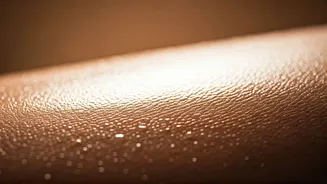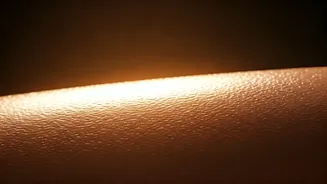Prep Your Skin
Before applying any face pack, prepping your skin is crucial for optimal results. Start by cleansing your face thoroughly with a gentle cleanser suitable
for your skin type. This removes surface dirt, oil, and makeup that can impede the pack's effectiveness. Next, gently exfoliate to remove dead skin cells. This step allows the face pack to penetrate deeper, maximizing its benefits. You can use a mild scrub or chemical exfoliant. Rinse thoroughly with lukewarm water after exfoliating and pat your face dry. Applying a toner after cleansing and exfoliating can help balance your skin's pH levels, creating a better environment for the face pack. Ensure your face is clean and slightly damp before applying the pack to facilitate absorption. By meticulously prepping your skin, you create a perfect canvas for the face pack to work its magic and deliver radiant results.
Time It Right
Knowing the best time to apply a face pack can significantly impact its efficacy. While there's no strict rule, generally, the best times are morning or evening. Consider your schedule and skin's needs. If your skin is exposed to pollutants during the day, applying a face pack in the evening after cleansing can help remove impurities and promote overnight repair. If you prefer mornings, applying a face pack can refresh and revitalize your skin, providing a healthy glow for the day ahead. Always choose a time when you can relax and allow the pack to sit undisturbed. Avoid applying face packs when you're in a hurry or under stress, as it's essential to allow yourself time to unwind during the process. Adjust the frequency of face pack application based on your skin type. Oily skin might benefit from more frequent use, while dry or sensitive skin might need less.
Application Techniques
Applying the face pack correctly is as important as choosing the right one. Use clean hands or a spatula to scoop the product from the container. Avoid using dirty fingers as they can contaminate the product and transfer bacteria to your skin. Apply an even layer of the face pack across your face, avoiding the delicate eye and lip areas. If the pack includes a specific application method, like using upward strokes, follow those instructions. Ensure the layer is thick enough to cover your skin without being excessive, and prevent it from drying out too quickly. For sheet masks, ensure they adhere smoothly to the contours of your face. Use a gentle patting motion to ensure all areas are in contact. If using a brush for application, clean it thoroughly after each use to prevent bacterial growth. Be mindful of product distribution; aim for even coverage to ensure all parts of your face receive the same benefits. The right application technique ensures the face pack works optimally, leaving your skin feeling refreshed and revitalized.
Drying Duration
Allowing the face pack to dry for the appropriate amount of time is crucial. The drying time varies depending on the face pack type and the product's instructions. Usually, face packs dry in 10-20 minutes, depending on their consistency and the environment. Over-drying a face pack can strip the skin of its natural oils, leading to dryness and irritation. Always check the pack instructions for the recommended drying time. While some packs might change color or texture as they dry, don't leave them on for longer than suggested. If you have dry skin, consider removing the pack slightly before it completely dries to prevent over-drying. Use a timer to monitor the time and prevent exceeding the recommended duration. The right drying time maximizes the benefits of the face pack while avoiding potential adverse effects, leaving your skin feeling balanced and healthy. Patience and observation are key to achieving the desired results.
Rinse & Hydrate
Once the face pack has dried for the recommended duration, it's time to rinse it off. Use lukewarm water and gently massage your face in circular motions to remove the pack. Avoid using hot water, as it can dry out your skin. Make sure all product residue is removed; lingering residue can lead to clogged pores. Pat your face dry with a clean, soft towel. The final step is hydration, as it’s essential to replenish moisture after a face pack. Apply a moisturizer suitable for your skin type to hydrate and seal in the benefits of the face pack. Consider using a serum before moisturizing for added hydration. If you used a face pack containing exfoliating ingredients, be extra gentle during rinsing and apply a soothing moisturizer. Post-application, observe how your skin feels; if it feels tight or dry, use a richer moisturizer. Proper rinsing and hydration are vital steps to ensure your skin is refreshed, moisturized, and glowing after using a face pack.












